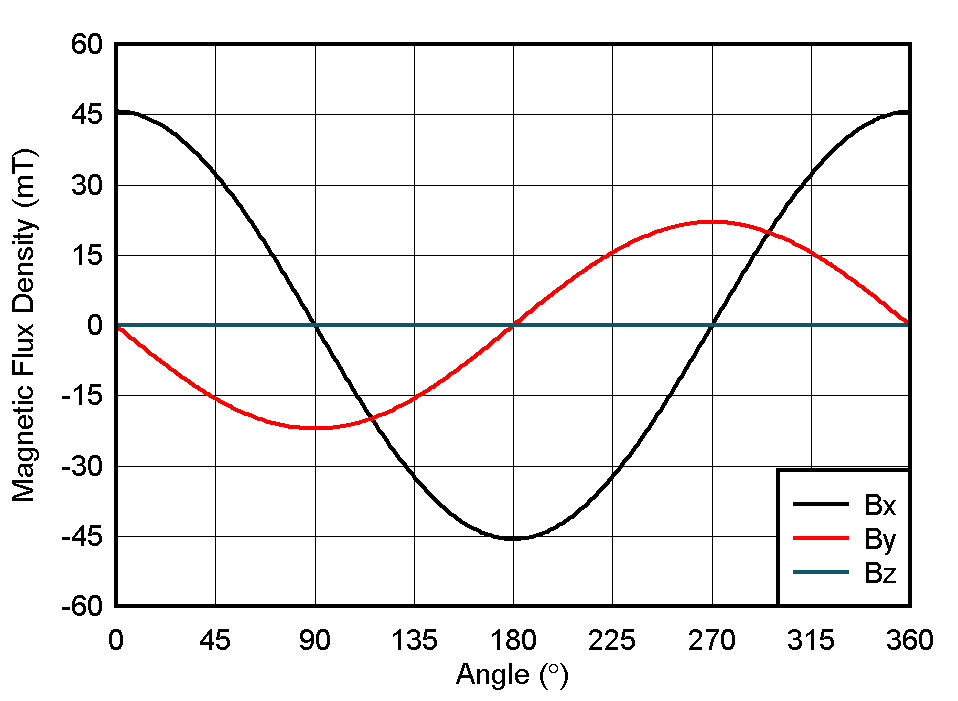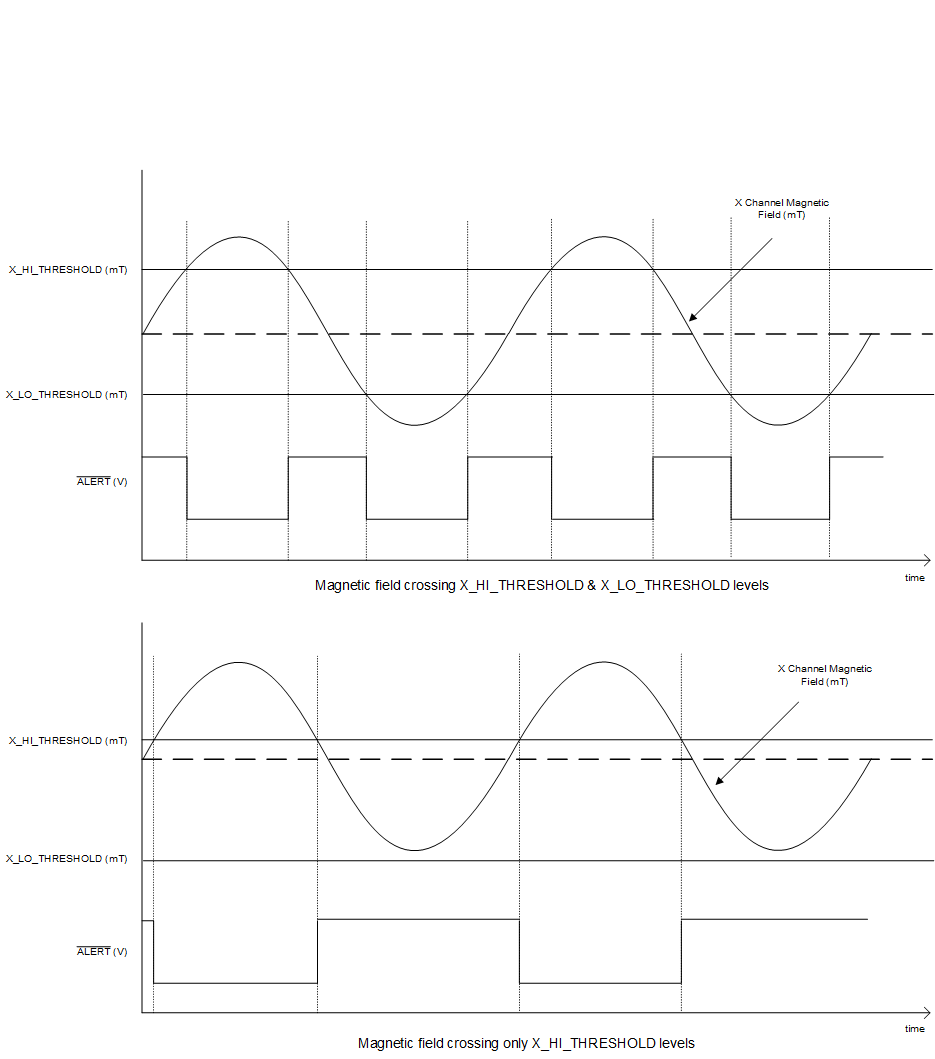SBAA463A january 2021 – april 2023 TMAG5170 , TMAG5170-Q1 , TMAG5170D-Q1 , TMAG5173-Q1 , TMAG5273
2.4 Tamper and Stray Field Detection
An added benefit of multiple axes of sensitivity is that tamper and stray field detection may be implemented. Again consider the outputs generated in the On-Axis placement.
 Figure 2-11 Magnetic Flux Density vs Angle for
a 3D In-Plane Sensor
Figure 2-11 Magnetic Flux Density vs Angle for
a 3D In-Plane SensorNotice in this case that while angle calculations are possible and only require the X and Y axes, that there is no input produced at this location in the Z direction. TMAG5170 allows the user to monitor all three axes together, and so with this configuration, any input on the Z-axis can indicate a magnetic field from an external source.
Additionally, TMAG5170 allows the user to programatically set thresholds for any axis that will trigger output on the ALRT pin. Both high and low thresholds may be set as Figure 2-12 shows.
 Figure 2-12 TMAG5170 Magnetic Switch
Mode
Figure 2-12 TMAG5170 Magnetic Switch
ModeNot only can a trigger be set on the unused axis, but we can set limits around acceptable inputs with the expected signals as well. Each axis may be independently programmed with both upper and lower limits. In this way the device may be configured to restrict operation to a fixed operating window for any magnetic input which should never be exceeded.
Adding this functionality to any measurement helps provide secure monitoring that may inform the controller when to take measures to prevent actions from false input.